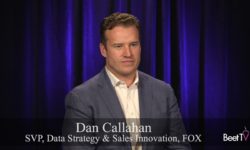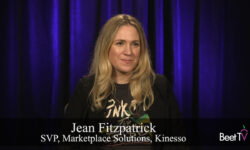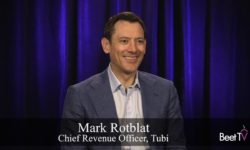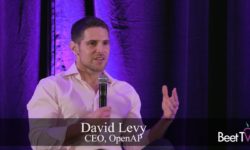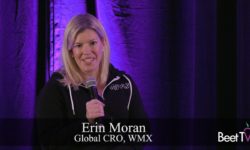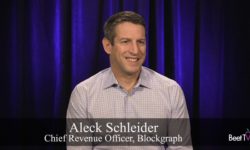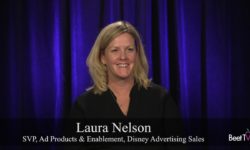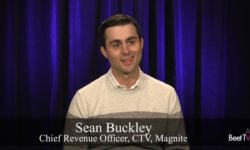Marketers and publishers want to heed the new audience privacy imperative – but they also want to be able to connect and overlay audience datasets to make their targeting offering better.
In that troublesome space has emerged a new class of software product – the “clean room”, or “safe haven”.
In this video interview with Denise Colella for Beet.TV at Beet Retreat Santa Monica, Marc Cestaro, InfoSum’s VP of advanced TV for North America, explains why that kind of product is so important.
Clean connections
This is fascinating. I had never heard the term clean room before https://t.co/Tc8UF6af3X
— Sam Muffly (@SamMuffly) December 9, 2021
“We play this agnostic approach where we don’t own touch control or sell any data,” Cestaro says.
“We sit in the middle of it all and just help illustrate and facilitate those collaborations without ever actually putting our hands on anything.”
InfoSum allows companies to join datasets without actually moving their data, something which would likely breach privacy rules.
It is a capability now used by global companies like ITV, Channel 4, eBay, Experian and The Telegraph, all of which are building out their own data-driven consumer ad targeting capabilities and all of which are adapting to a world without rudimentary cookie targeting.
Speed vs fragmentation
But, although companies are embracing the platforms, Cestaro is worried about a proliferation in the specific options used.
“Everyone has their own solutions, their brands, agencies, everyone has one way of wanting to do something,” he says.
“When you scale that out it becomes super-fragmented. We’re that infrastructure that sits in the middle and allows everyone to work together at a much quicker speed than what’s done today.”
How will #retailmedia evolve in 2022? @BenCicchetti sat down with a number of experts from across InfoSum to explore key trends for the year ahead, including retail media ecosystems, first-party data, privacy-enhancing technologies, and more.
Read more: https://t.co/IGbrF0L5nU pic.twitter.com/Ms72lFzAhf
— InfoSum (@InfoSum) December 8, 2021
Agnostic position
InfoSum raised a $65 million Series B investment this summer, as data clean rooms rose in appeal for marketers and publishers keen to continue connecting data.
UK health retailer Boots recently told Beet.TV how it is using InfoSum technology to use its own customer-loyalty database together with user lists from broadcasters ITV and Channel 4, to target ads on TV.
UK Health Retailer Boots Leaning Into Targeted TV: CMO Markey
“Speed and being able to be agnostic … those are the two areas that we are focused on,” Cestaro adds.
“There’s a lot of companies, brands and publishers that want to work together. But, when it comes to sharing data, there’s a challenge of how data gets from A to B, and potentially to C.
“That’s (a publisher’s) most valuable source of data, their subscriber list or their subscriber files. We’re solving for that by allowing them to maintain full possession of that.
“It never gets used. It never gets shared no. No PII is ever transacted or moved, but yet they’re still able to collaborate in that one-to-one fashion that we’re all familiar with.”









